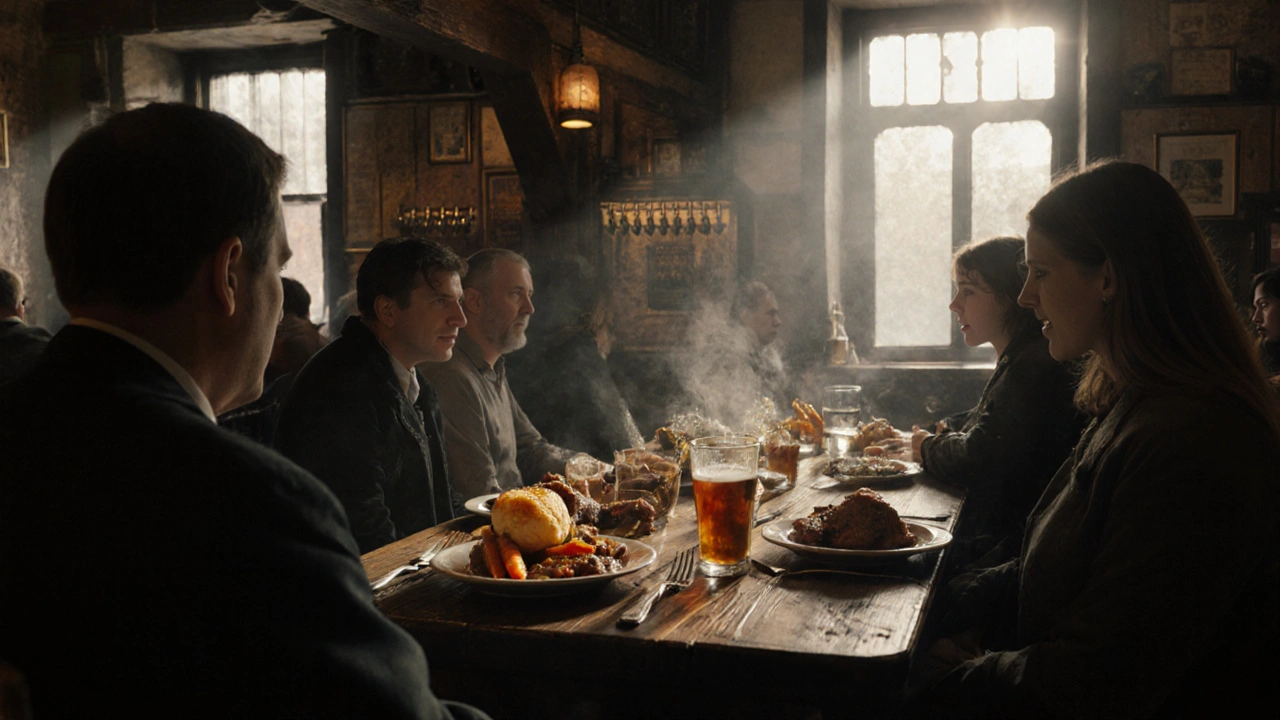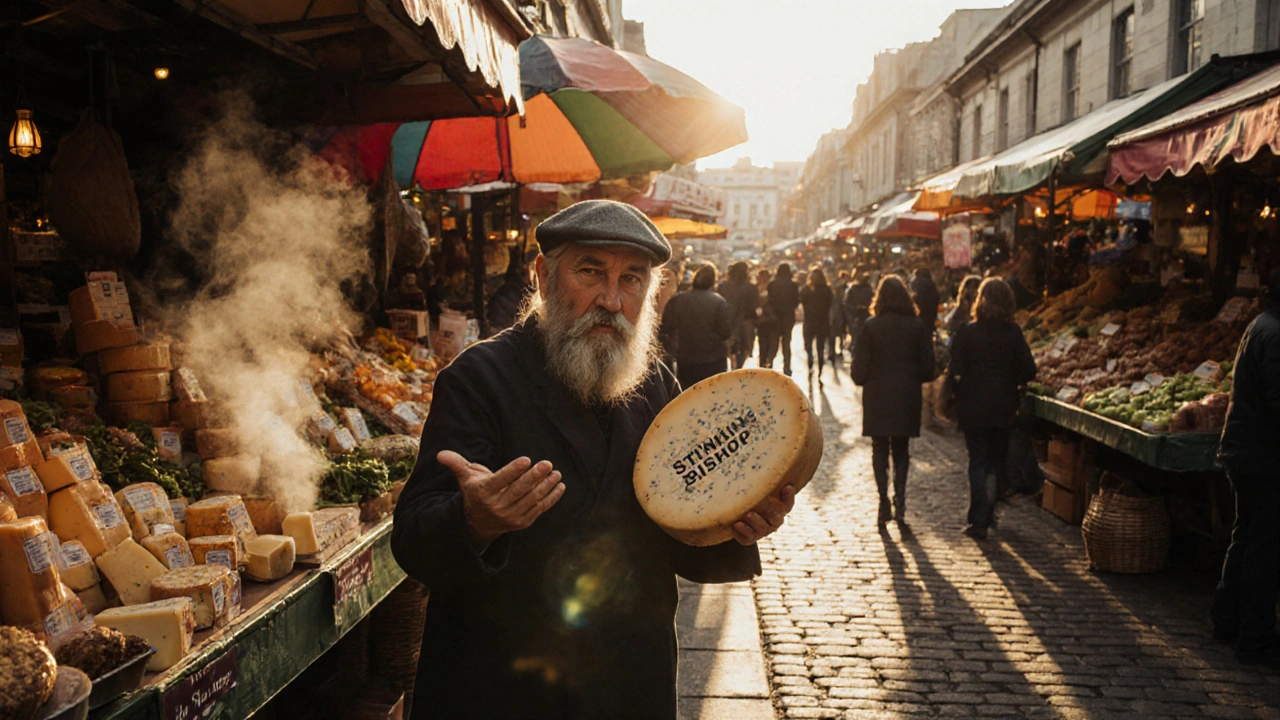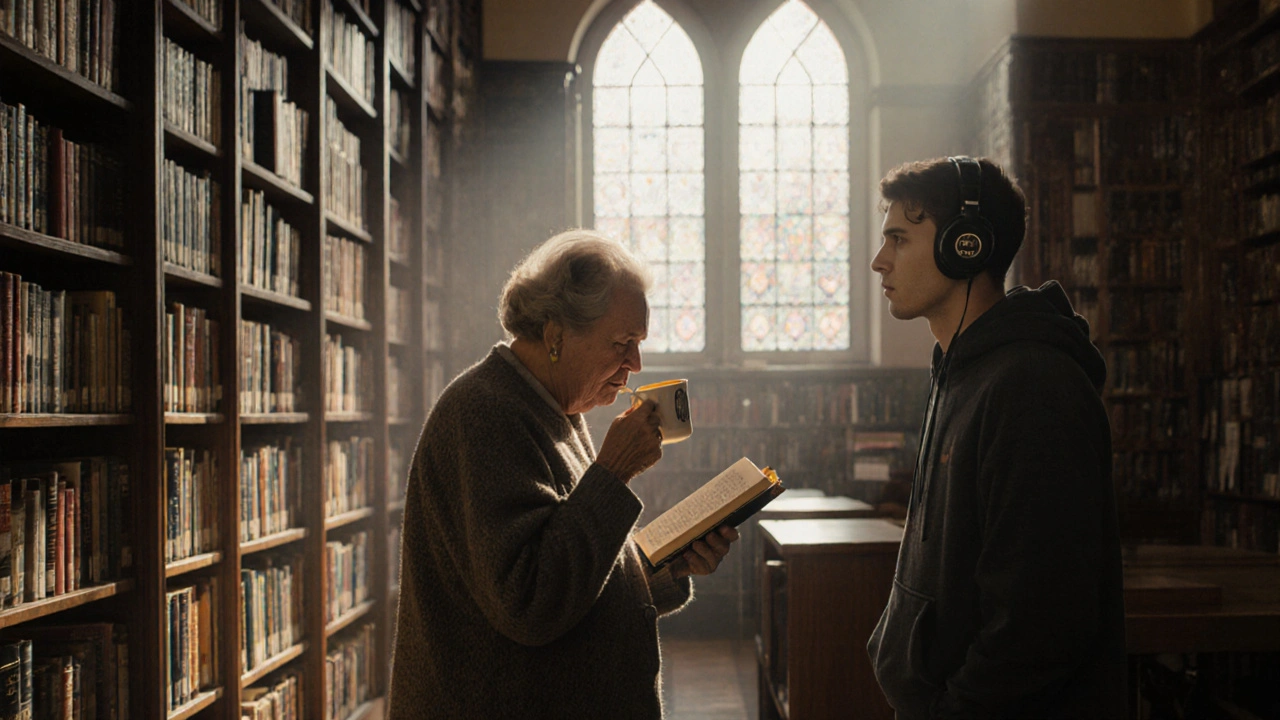Cultural Experiences That Connect You to the Heart of London

There’s a rhythm to London that doesn’t show up on tourist maps. It’s in the clink of pint glasses at 4 p.m. in a Camden pub where the same bartender remembers your name, the hum of a Sunday market in Brixton where jerk chicken smells like home to someone’s grandmother, and the quiet hush inside the National Gallery before the crowds arrive. This city doesn’t just have culture-it breathes it. And if you’ve lived here for years or just arrived last week, the real magic isn’t in Big Ben or the London Eye. It’s in the moments that make you feel like you belong.
Start Your Day Like a Local: The Sunday Roast Ritual
Forget fancy brunch spots in Shoreditch for a moment. If you want to understand English identity, sit down for a Sunday roast. It’s not just food-it’s tradition. The roast beef, Yorkshire pudding, crispy potatoes, and gravy are served with a side of quiet family chatter. Head to The Harwood Arms in Fulham, the only pub in London with two Michelin stars, or keep it simple at The Queen’s Head in Brixton, where the roast comes with a side of local history and a £12 price tag. The ritual is the same: no rush, no phones on the table, and always a second helping of carrots. Locals don’t call it a meal. They call it a reset.
Walk the Market, Not the Mall
London’s markets aren’t just places to buy things-they’re living archives. At Camden Market, you’ll find vintage Bowie tees and handmade leather belts, but you’ll also hear Nigerian drummers, Polish folk singers, and a 70-year-old man from Peckham telling you why his mum’s pickled onions are the best in the borough. At Borough Market, skip the overpriced cheese boards and talk to the man behind the Stinking Bishop stall. He’ll tell you how the cheese smells like wet socks but tastes like earth and butter. Ask him about the 18th-century smugglers who used to hide wheels under the arches. That’s the real history.
Join the Quiet Rebellion of the Library
London has over 400 public libraries, and most tourists don’t know they exist. The Islington Central Library has a silent reading room where you can sit for hours with a cup of tea from the café next door, surrounded by first editions of Dickens and local history books you didn’t know you needed. The Hackney Central Library hosts weekly poetry slams in the basement-no tickets, no cover charge. Just show up. You’ll hear a 16-year-old from Tottenham read about her mum’s journey from Jamaica, or a retired bus driver recite Yeats like he wrote it yesterday. Libraries here aren’t quiet tombs. They’re community hearts.

Attend a Church Service That Isn’t About Religion
St. Martin-in-the-Fields in Trafalgar Square isn’t just a church-it’s a cultural hub. Every Wednesday at 1 p.m., they host free lunchtime concerts. No one asks for donations. No one checks your ticket. You just walk in, find a seat, and listen to a string quartet play Bach while sunlight streams through the stained glass. It’s the same space where the homeless are offered warm meals, and where the mayor once gave a speech after the 7/7 attacks. The music, the silence, the shared space-it’s not about faith. It’s about being human together.
Learn a Skill from Someone Who’s Been Doing It for 50 Years
London’s artisans aren’t just preserving crafts-they’re keeping alive stories. At John Lewis & Partners on Oxford Street, you can book a two-hour workshop with the last remaining hand-bound bookbinder in the city. He’ll show you how to stitch leather with waxed thread, the same way they did in 1923. In Spitalfields, visit John Robie, the last traditional English hatmaker still crafting bowlers and trilbies by hand. He’s 82. His apprentices are in their 30s. He’ll tell you that hats used to be how you told the world who you were. Now, they’re how you remember who you were.
Listen to the Sound of London’s Forgotten Streets
Take the Central Line to East Ham and walk down Barking Road. You’ll hear Bengali qawwalis drifting from a corner shop, the clatter of a Chinese herbalist’s mortar and pestle, and the crackle of a Jamaican sound system playing dancehall from the 90s. These aren’t tourist attractions. They’re daily life. The same streets that once echoed with the footsteps of Windrush migrants now pulse with new rhythms. The Black Cultural Archives in Brixton holds recordings of these sounds-oral histories from people who built this city without being asked. You can listen to them for free.

Be Part of the Unwritten Rules
There are no signs, but everyone knows them. Don’t stand on the left side of the escalator at Tottenham Court Road. Say “cheers” instead of “thank you” when someone holds the door. Never order a latte in a pub-order a “flat white” and you’ll be asked if you’re from Australia. If you’re invited to a “cuppa,” bring a cake. If someone says “you’re welcome” after you say “sorry,” don’t say “no problem”-just nod. These aren’t quirks. They’re glue. They’re how a city of 8 million people still feels like a village.
Go to a Festival That Doesn’t Have a Website
Most London festivals are advertised on Instagram. But the best ones? You hear about them from a neighbor. The Notting Hill Carnival is famous, but the Peckham Festival-held every July in a park behind the bus station-is where you’ll find a 90-year-old woman teaching kids to make jam tarts from her grandmother’s recipe. The Walthamstow Garden Party has no sponsors, no branding, just a stage made of pallets and a guy playing the accordion who’s been doing it since 1987. These events don’t exist to be seen. They exist to be lived.
Stay Late-Just Once
At 11 p.m., most of London shuts down. But if you walk down the alley behind The George in Southwark, you’ll find a back room where locals gather after hours. No sign. No menu. Just a pot of tea, a plate of biscuits, and someone playing an old vinyl of Gil Scott-Heron. It’s not a bar. It’s not a club. It’s a quiet gathering of people who’ve had a long day and just want to sit in silence with someone who gets it. You don’t need to know the rules. Just sit down. Someone will hand you a cup.
London doesn’t give you culture on a platter. It lets you find it-slowly, quietly, in the spaces between the noise. You won’t find it in guidebooks. You’ll find it in the way a shopkeeper in Peckham remembers your child’s name, in the way the bus driver lets you off five minutes early because you’re tired, in the way a stranger in the Tube smiles because you’re wearing the same scarf as their mum.
That’s the heart of the place. Not the monuments. Not the landmarks. The people. The quiet, stubborn, beautiful act of belonging.
What are the most authentic cultural experiences in London for newcomers?
Start with the Sunday roast, visit a local library for free events, and walk through Borough Market early on a weekday. Talk to the stallholders-they’ll tell you stories you won’t find online. Join a free concert at St. Martin-in-the-Fields or attend a poetry night at Hackney Central Library. These aren’t tourist activities. They’re daily rituals for locals.
Where can I experience London’s multicultural heritage without going to a museum?
Head to Brixton Market on a Saturday for Caribbean food and sound systems, or walk down Brick Lane for Bangladeshi curry houses and vintage shops run by families who’ve been there since the 70s. In Southall, visit the Gurdwara and try the Punjabi breakfast. In Walthamstow, catch a West African drum circle in the park. Culture here isn’t behind glass-it’s on the streets, in the kitchens, and in the voices.
Are there free cultural events in London that locals actually attend?
Yes. The National Gallery has free concerts every Wednesday. The Southbank Centre hosts free poetry readings on Sundays. The Barbican’s library has free film screenings. Libraries across London-like Islington, Lewisham, and Tower Hamlets-host storytelling nights, craft circles, and history talks. These aren’t for tourists. They’re for people who live here and want to stay connected.
How do I avoid tourist traps and find real London culture?
Skip the souvenir shops in Covent Garden. Walk into a pub that doesn’t have a menu with photos. Ask the bartender what they’re drinking. Go to a market after 3 p.m. when the tourists leave and the locals come to buy their weekly groceries. Visit a church that’s open for quiet reflection, not just services. Real culture lives in the places that don’t advertise themselves.
What’s one thing tourists always miss about London’s culture?
They miss the silence. London isn’t loud all the time. There are quiet corners-libraries, churchyards, canal paths, and back gardens-where people sit alone with their thoughts. The culture isn’t just in the festivals and the food. It’s in the space between. The pauses. The shared glances on the Tube. The way people say “cheers” without looking up. That’s the soul of the city.